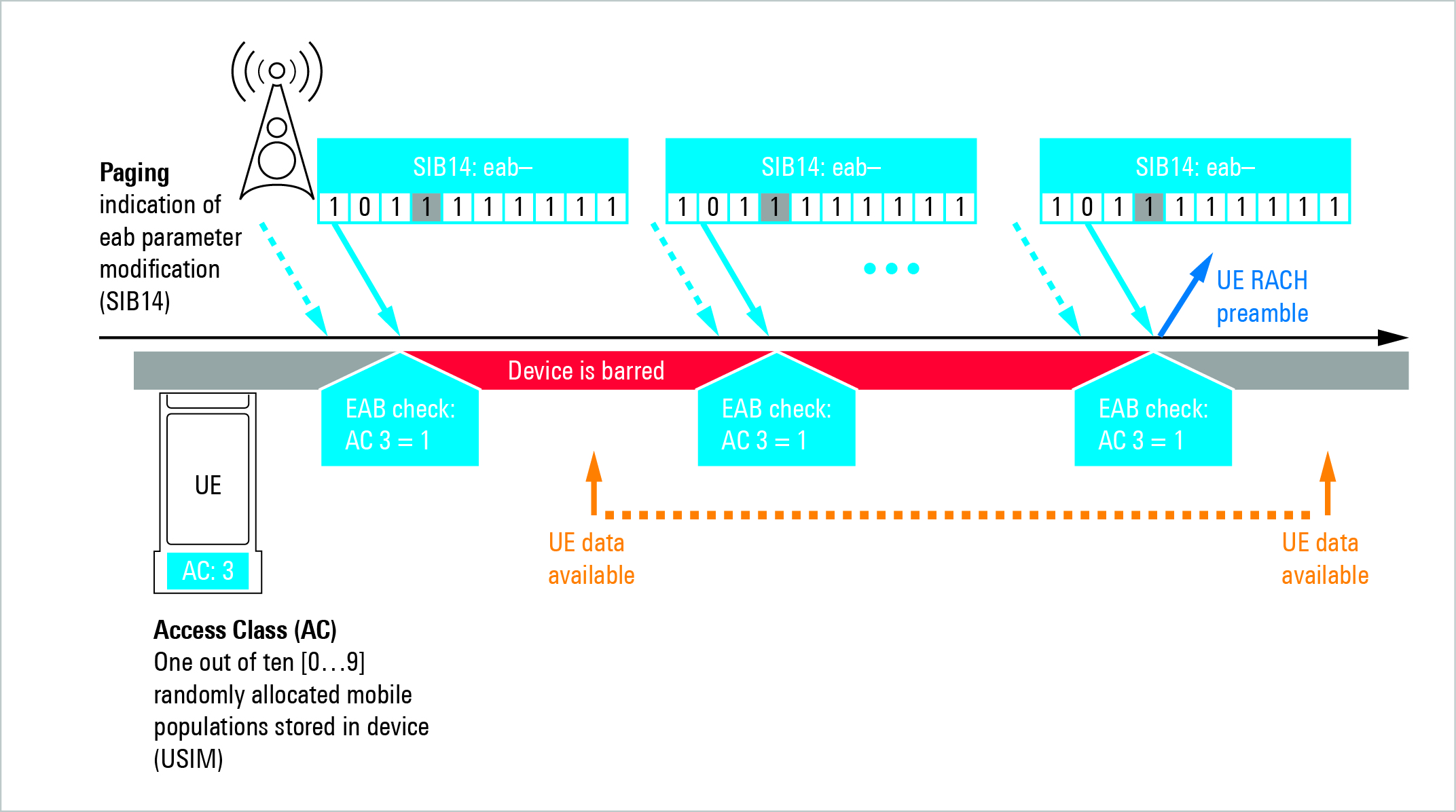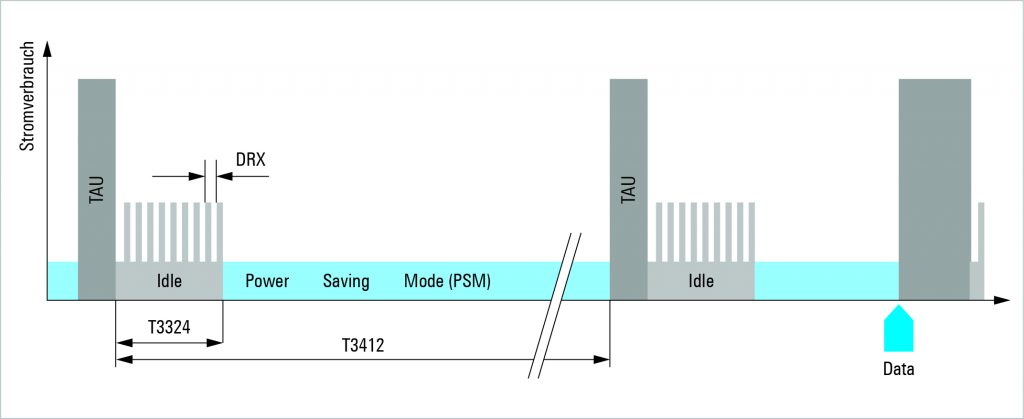Overload mechanisms and options for reducing the signaling traffic have been introduced to handle these types of occurrences. Many IoT applications – sensor networks as an example – only rarely send data and do not need to operate precisely to the second. These devices can report to the network that they are prepared to accept longer delays during the connection setup (delay tolerant access).
Rel. 10 includes a process that permits the network to initially reject the connection requests from these devices and delay them until a later time (extended wait time). With Rel. 11, access to the cellular network can be controlled by means of access classes. In this case, a device may set up a connection only if it is assigned a class that is currently permitted by the network. The network transmits a bitmap (EAB barring bitmap) that identifies which classes are permitted access (Fig 1).

These processes introduced in Rel. 10 and 11 ensure reliable and stable operation of the IoT applications and devices of today and tomorrow within cellular networks without endangering the mobile broadband service.
The only thing still missing were optimized solutions for IoT devices with low data traffic, low power consumption and low costs. The committee started on those in Rel. 12. It quickly became clear, however, that there will be no single, simple solution for all applications. The requirements for applications such as container tracking, waste bin management, smart meters, agricultural sensors and sports and personal health trackers are too varied. Rel. 12 therefore concentrates on the areas of power consumption and cost-effective modems. The results are a power-saving mode (PSM) that is especially important for battery-operated devices and a new LTE device category 0, which should have only 50 % of the complexity of a category 1 modem.
Power-saving mode (PSM)
The PSM process starts after a data link is terminated or after the periodic tracking area update (TAU) procedure completes. The device first goes into the normal idle mode in which it periodically switches to receive mode in order to receive messages. As a result, it remains available via paging. After timer T3324 expires, PSM is entered. In this mode, the device is always ready to send messages because it remains registered in the network. However the frontend is switched off so the device is not accessible via paging.
PSM is thus suited for sensor networks that only rarely need to send data to the device, and in only small amounts. This process is not suitable for applications that require a quick response from the sensor or expect a time-critical reaction. Applications that use PSM must tolerate this behavior and the design must include the optimal timer values for idle mode and power-saving mode. End-to-end tests are essential for matching the application behavior to the network behavior.

Cost-effective devices with LTE category 0
The introduction of category 0 was a first attempt at permitting significantly less expensive LTE modems for the M2M market. Ideally, they will also use less power. To achieve this, the complexity of the modem was reduced by bringing the supported data rate down to 1 Mbps. This minimizes the requirements for processing power and memory. Manufacturers can also eliminate full duplex mode and multiple antennas. As a result, the device does not require duplex filters that otherwise would be necessary to prevent interference between the transmitter and receiver.
Further development of LTE-M
LTE-M has taken the first steps. Rel. 13 includes additional cost-reduction measures, especially lower bandwidths in the uplink and downlink, lower data rates and reduced transmit power.
A further reduction of the power consumption is also planned. This affects applications that could not use PSM because the device must remain available at least for short intervals, even if it does not itself transmit data. In this case, the modem periodically goes from idle mode into receive mode for paging messages and system status information. The DRX timer determines how often this occurs. Currently, the shortest interval is 2.56 seconds. That is fairly frequent for a device that expects data only every 15 minutes, for example. Planned and under discussion is an extension of the timer (eDRX), which should provide a significantly longer battery life of several years.
The range must be improved for applications involving smart meters installed under extreme receive conditions, such in a basement, or for widely dispersed devices, such as in agricultural applications. Various techniques, including multiple repetitions of data or less stringent time and error requirements, should provide an improvement in the power balance between the transmitter and receiver of 15 dB. The range will be increased as a result.
In Rel. 14, requirements from the automotive industry have prompted the investigation of options for drastically reducing the latency in communications between consumer devices, allowing realtime communication between automobiles, as an example.
LP-WAN: competition for LTE-M?
The new features for LTE-M make it possible to address many more IoT applications, facilitating the transition from 2G/3G technologies to LTE for many users. However, there is a need now for extremely cost-effective, power-saving devices for which the current cellular technologies do not appear to be suitable. In response, a number of alternative technologies, such as low-power WAN, have found a market for themselves over the last few years.



